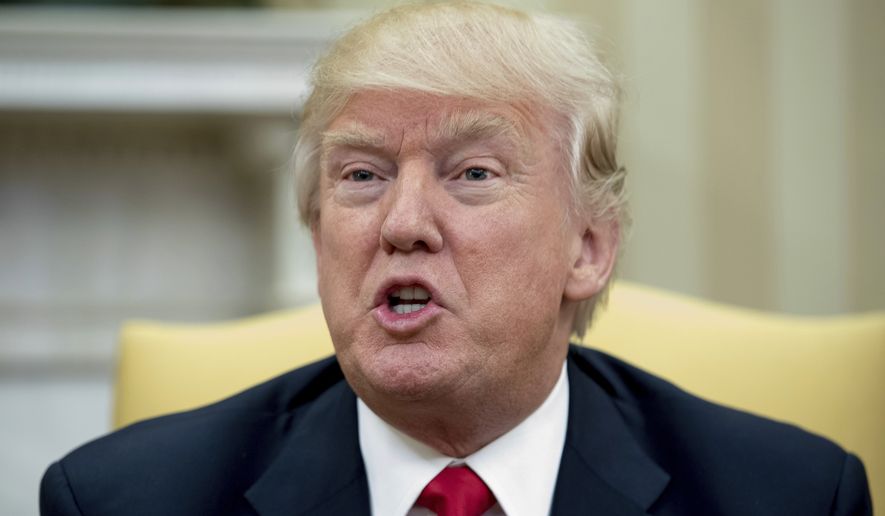OPINION:
President Trump sent a direct and stern message to the Freedom Caucus in his Thursday tweet, warning the conservative House caucus “will hurt the entire Republican agenda if they don’t get on the team, & fast. We must fight them, & Dems, in 2018!”
The question is: Is it the right target? If the president is attacking the conservative caucus, can he build a winning coalition to pass his agenda? Mr. Trump needs the conservatives, and his threats will only further antagonize them. On the other hand, calling out recalcitrant Republicans is certainly an effective way of getting their attention.
Don’t get me wrong. I completely understand why the president is upset and frustrated after spending his political capital dealing with the concerns of the Freedom Caucus. The investment of time and energy by the president, Vice President Mike Pence and HHS Secretary Thomas Price seemed fruitless after it became clear not enough Freedom Caucus members were ready to support the GOP bill, feeling they had been left out of the process.
While several conservative components were included in the bill, one of the major concerns for the Freedom Caucus members was the fact that not enough was done in the bill to reduce premiums. Also, Speaker Paul D. Ryan was pushing an aggressive timeline to get the health bill done. One lesson learned is that they needed more time to work out the details and find common ground.
While conservatives bailed, a number of moderates also refused to support the bill, citing provisions to curb Medicaid coverage and the Congressional Budget Office’s frightening projection that 24 million people would lose their insurance under the bill. It would have been difficult for Republicans to “sell” voters on the idea that their replacement was better than the failing Obamacare. For their part, Democrats have been masterful at telling the stories of grandmothers dying if the Affordable Care Act were repealed.
Real division exists among even the Freedom Caucus. Some members are getting frustrated that the group has become the “caucus of no,” unable to evolve into an effective part of the GOP majority. Texas Republican Rep. Ted Poe left the Freedom Caucus for just that reason.
But some caucus members are doubling down in their feud with the president. Michigan Rep. Justin Amash responded to Mr. Trump’s tweet with a defiant one of his own: “It didn’t take long for the swamp to drain @realDonaldTrump. No shame, Mr. President. Almost everyone succumbs to the D.C. Establishment.”
Note to Mr. Amash: President Trump is not, and will likely never be, part of the establishment, but he does want to get things done in Washington.
Both sides need to realize that they need each other to succeed — not only in health care, but on tax reform, trade, immigration and any number of other pressing issues.
The Democrats are focused on preserving Obamacare and President Obama’s legacy. They have no interest in making transformative changes to the law. Mr. Trump will need to rely on both the Freedom Caucus and moderate Republicans to repeal and replace Obamacare.
Threatening the caucus might get their attention, but in the long run, keeping the caucus members close and working through the fine details of the legislation is a better path to health care success for Mr. Trump.
The winning coalition for the president begins with uniting the Republican Party, which might be his greatest challenge yet.
• Mercedes Schlapp is a Fox News contributor, co-founder of Cove Strategies and former White House director of specialty media under President George W. Bush.
• Mercedes Schlapp can be reached at mschlapp@123washingtontimes.com.




Please read our comment policy before commenting.